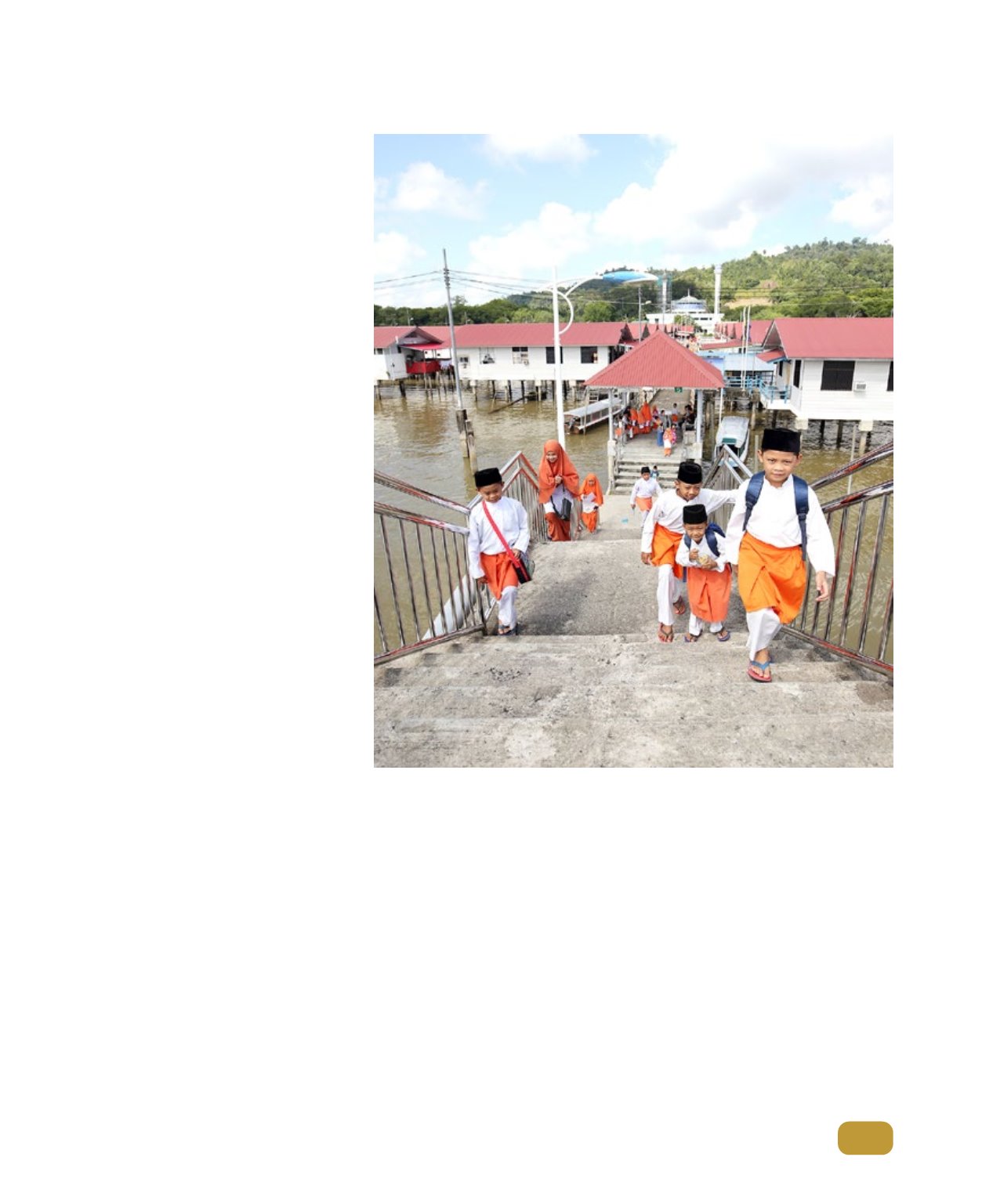

217
EDUCATION
Islamic Law History,
Usul Fiqh
,
Tauhid
,
‘Ulum
Al-Quran and
Mustalah
al-
Hadith
, and
Tafsir
Al-Quran and
Hadith
for students in the pre-university level.
Arabic schools in Brunei offer two core
curriculums: the national curriculum
for general subjects and the Ma’had
Buhuth al-Islamiah curriculum from
Egypt for religious subjects and
Arabic language. These curriculums
are based on the National Education
System for the 21
st
Century (SPN21) to
produce students equipped with skills
in line with the 21
st
Century.
The first Arabic school in Brunei was
built in 1964, known as Hassanal
Bolkiah Boys Arabic Secondary
School (SMALHB). At present, the
country has seven Arabic schools:
four in Brunei-Muara District and
one each in Belait, Tutong and
Temburong Districts. These Arabic
schools are the Temburong Arabic
Preparatory School, the Belait Arabic
School, the Bandar Seri Begawan
Arabic Preparatory School, the
Sultan Haji Hassanal Bolkiah Arabic
School, Mahad Islam Brunei in Tutong
District, the Raja Isteri Pengiran Anak
Hajah Saleha Girls Arabic Religious
Secondary School and the SMALHB.
Religious schools start from pre-
school. Education in Arabic schools
begins in Year 5 and is offered until
pre-university level for male students
and Year 11 for female students.
MoRA also offers religious classes for
adults with the implementation of the
General Rules of the Religious Adult
Class 1980 number: 31 JUB108/1980,
and the Al-Quran Adult Class
established separately, and combined
into what is now known as the Religious
Adult class teaching subjects such as
Tauhid
,
Fiqh
,
Tasawuf
and Al-Quran.
Religious lessons are based on the
syllabus in primary level religious
schooling, where the syllabus for
Religious Adult classes at the primary
level is according to the syllabus in
Primary I to Primary III, while the syllabus
for the advanced classes follows that
of those in Primary IV to Primary VI.
The ministry also offers further
education in special institutions
which are divided into four categories
such as Uniformed Training Centres,
Treatment Centres, Rehabilitation and
Guidance Centres, and Special Needs
Centres.









